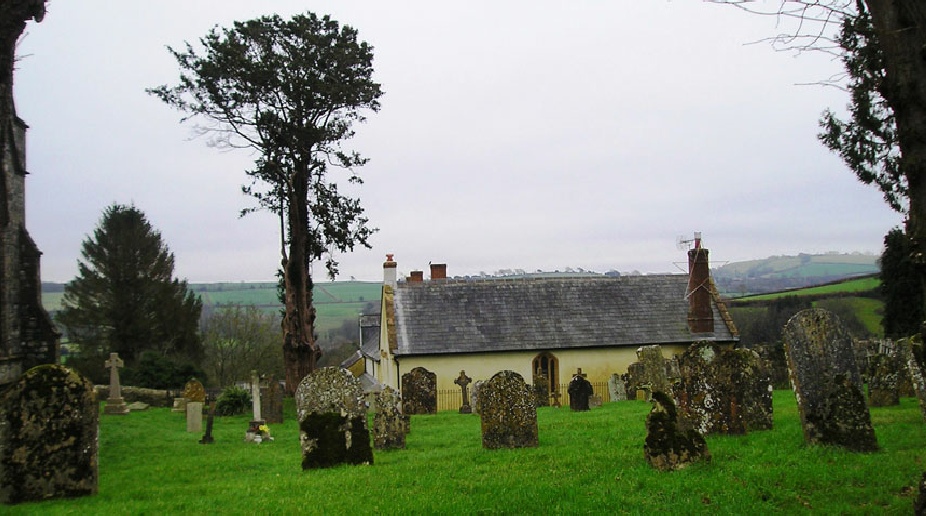WHO WAS WILLIAM BRAGGE?
Reverend Bartelot’s unpublished 1901 history of Sadborow is an object lesson in
the dangers of ignoring evidence to make the story fit. His account of how Thorncombe
fared during the civil war (1640-1660) is heavily biased in favour of the royalist
cause, and full of inaccuracies. However, all credit to him, for signposting the
evidence. During research it became clear there were new stories to be told. (Thorncombe’s
Commonwealth Vicars) One has turned out to be about a certain William Bragge’s journey
from a forge in Somerset to the ranks of Thorncombe’s gentry.
Sadborow & Chaffeigh Bragges
In 1648, Presbyterian William Bragge was appointed minister of Thorncombe parish
by Oliver Cromwell’s parliament. Given the Bragge family of Sadborow had been the
patrons of St Mary’s, Thorncombe, since their acquisition of the Thorncombe Manor
in 1578, it might reasonably be assumed that this individual, was a member of the
Sadborow Bragges. However, the evidence says otherwise.
Inquiries into William Bragge’s other possible Thorncombe connections explored
whether he was related to the other branch of the Bragge family living at Chaffeigh.
Perhaps he was the brother of attorney Matthew the Younger, the father of Matthew
Bragge who was hung, drawn and quartered in 1685 by Judge Jefferies as a Monmouth
rebel? But no record of a William Bragge, son of Matthew Bragge the Elder of
Thorncombe was discovered for this period, among college records for divinity graduates
at Oxford or Cambridge, the only two universities in England during the 17th century.
The first recorded William, son of Matthew Bragge of Thorncombe, and attending Oxford
University, was awarded his MA in Divinity in 1683. He became Thorncombe’s incumbent
in 1684.
Blacksmith’s son
However among the lists was another William Bragge. The son of John, a farrier
from Allowensay in Somerset, he attended schools in Ilminster and Hinton St George
and attained his BA from Sidney College Cambridge in 1629. This put his date of
birth around 1610. William was awarded his MA in 1632. On balance it is highly likely
that this man is the Presbyterian minister, appointed to Thorncombe parish in 1648.
Minister Bragge made the transition to Anglican priest in 1662 following the restoration
of Charles II. Surviving structural and architectural evidence at Glebe House, the
former vicarage, indicates that following his appointment as Thorncombe’s new vicar,
William Bragge began extending the house as befitted his status. His climb up the
social scale had begun.
Gentleman priest
Mr was the form of address used for lesser gentry. In Thorncombe’s 1674 Hearth Tax
Return he is listed as Mr William Bragge, vicar, with seven hearths to his name.
Numbers of hearths being a wealth indicator, this ranks him equal third with Matthew
Bragge at Chaffeigh, after Edmund Prideaux Esq of Forde Abbey with 24 hearths
and namesake William Bragge Esq at Sadborow with ten hearths. A more detailed
snapshot of Mr William Bragge’s means following his death in 1680 is given in
the probate inventory of his possessions. Worth £353 10s 8d (around £40,000 today),
his furniture, books, cutlery, table linen, beds, feather mattresses and pillows
show Mr William Bragge was a man of quality with money to spare for luxuries, who
liked to display his wealth and enjoyed his home comforts.
In his 1680 will, there are legacies of ten pounds a year to his grandchildren Robert
and William ‘Merefield’. William Bragge’s presumed daughter Anne ‘Merefield’ is
a witness. In 1674 Bragge recorded the baptism of his first grandson Robert ‘Merifield’,
son of Mr Robert ‘Merifield’ of Woolminstone. With the birth of his first grandson,
William Bragge’s transition from son of a Somerset tradesman, through Presbyterian
minister to Anglican gentleman priest, was complete.
EVE HIGGS
January 2013
For a more detailed account including full references and a bibliography see:
Higgs, E. (2012), ‘Thorncombe’s Commonwealth Gap Revisited’,
Devon & Cornwall Notes & Queries, vol. XLI, pt. 1, pp.15-20




